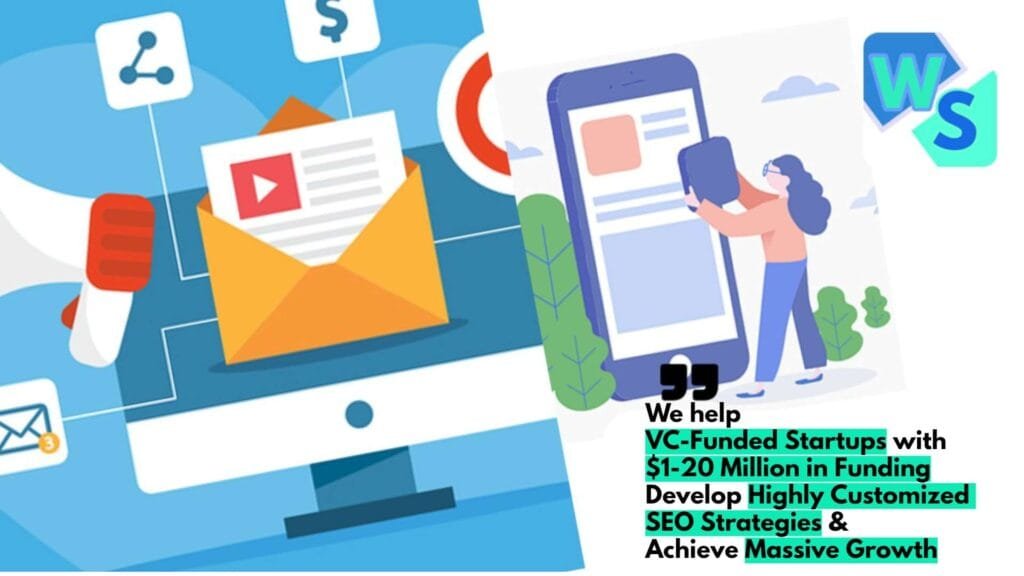Understanding Customer Preferences
Importance of Personalized Experiences
In my adventure toward shaping a truly unique customer experience, I’ve found that making things personal isn’t just a warm fuzzy feeling—it’s a total game-changer when it comes to keeping folks happy. A whopping 81% of customers enjoy companies that dial into personal experiences. On top of that, 70% believe it’s important for employees to recognize them and their history with the company.
When it comes to customer loyalty and keeping them coming back, personalization is like the secret sauce. People are more likely to revisit a brand when they feel seen and understood. I aim to channel this know-how by shaping our interactions and suggestions to suit their needs, forming a stronger bond.
| Customer Wants | Numbers Don’t Lie |
|---|---|
| Dig the personal touch | 81% |
| Appreciate being remembered | 70% |
Customer Expectations in Communication
These days, folks want an effortless, smooth communication ride. They’re looking for freedom to reach out to a brand in their own style—whether that’s face-to-face, by phone, or hitting up digital spots like websites, social media, and chatbots.
This big ask nudges businesses to adopt ways that flexibly meet customer wants. Tech that lets conversations flow without making it a race against the clock is a must. It allows folks to engage when they’re ready, without feeling hurried by old-school service rules. By putting such systems in place, I’ve noticed less hassle and a happier customer vibe.
I also feel it’s crucial to bring in tools that make interactions a breeze. Smart tech can step in to foresee what customers might need, smoothing out their journey from first chat to making a purchase. For more tips on supercharging customer interactions, take a gander at our piece on customer experience management.
Leveraging Technology for Enhanced Customer Experiences
In my quest to make customer experiences better, I’ve realized that modern tech is a game-changer. Two big hitters in this area are asynchronous conversations in customer service and the role of AI in making interactions smoother.
Asynchronous Conversations in Customer Service
Asynchronous conversations have completely flipped how I deal with customer interactions. It’s all about letting customers chat when they feel like it. This isn’t just a little bonus—it’s a game-changer for taking the hassle out of customer dealings. It means they don’t have to drop everything for a phone call or chat session. Nope, they can reach out when it’s convenient for them.
Here’s a major perk of asynchronous communication:
| Perk | What It’s About |
|---|---|
| Convenience | Customers can reply at their own pace, which cuts down stress and boosts how happy they are. |
Features like messaging apps or email support let folks take their time and think things through before responding. Not only does this make customers happier, but it gives businesses the chance to offer responses that really resonate.
Role of AI in Streamlining Customer Interactions
AI is like my secret weapon for making customer experiences top-notch. It’s great at supporting self-service and automating the nitty-gritty, making sure folks get the help they need right when they need it. With AI, I can dig into customer data and feedback to deliver interactions that are just right for them.
AI has some cool tricks up its sleeve:
- Data Support for Agents: It gives customer support agents the scoop on the customer, so they can give answers that hit the nail on the head.
- Automated Assistance: AI can handle automated stuff, cutting down wait times and keeping everyone happy.
- Analytics and Attribution: With AI-heavy call analytics tools like Invoca, I can keep tabs on customer interactions across different ways to communicate. It ties online stuff to offline results, showing me the direct impact of digital marketing efforts on phone call conversions (Invoca).
AI strategies let me give super-personalized experiences without swamping customers or my team. When interactions really connect with customers, satisfaction improves and they have to put in less effort—exactly what I aim for with tailored experiences (Monetate).
By mixing in asynchronous communication and maxing out AI’s potential, I keep pushing the envelope on personalizing the customer experience. These improvements don’t just make customers smile—they also make my customer service more efficient overall.
Personalization Strategies for Revenue Growth
Impact of Personalization on Business Growth
While trying to boost my customers’ thrill with our services, I’ve realized that a little touch of personalization can make a whole world of difference. When I took the extra step to offer experiences that felt like they were designed just for the individual, I saw a big uplift in customer smiles and repeat visits. In plain speak, more customers come back and tell their buddies, which means more gravy on the business plate.
I’ve stumbled upon some cold, hard facts showing that a bit of personal touch can spark customer vibes. A little birdie from Invoca mentioned that making things personal can really set a brand apart. Just think—your brand becomes the talk of the town, striking connections with folks on a whole different level. Here’s a sneak peek at what all that can look like on paper:
| Impact Measure | Percentage Jump |
|---|---|
| Customer Satisfaction | 20-30% |
| Conversion Rates | 15-20% |
| Repeat Purchases | 25-50% |
| Revenue Growth | 10-15% |
Utilizing AI for Customer Self-Service
To really give my customers the VIP treatment, I leaned into artificial intelligence to give them a hand with self-service options. It’s like having an all-knowing assistant who gets what you want even before you do! These AI whizzes help me recommend just the right thing based on what customers have liked or bought before. So, using snazzy stuff from Abmatic AI, I’ve been able to give folks a head start on what they might fancy next.
This tech not only cuts down the wait for help but also adds that cherry on top with tailored service. When people work with these AI-driven options, they can sort things out quickly, all by themselves. We’ve all seen giants like Amazon deal their magic; they use folks’ browsing and buying habits to suggest products that lead to a lot of the sales—about 35% of them come from those smart suggestions (Vorecol).
Bringing AI into play changes the interaction game between the brand and its customers in a way that feels refreshing and new. Smiles get wider, loyalty runs deeper, and yes, the cash register rings more often too. If you’re curious about jazzing up customer interaction further, check out our pieces on customer experience strategy and customer experience automation.
The Power of Personalized Marketing
I’ve learned that good marketing isn’t just about shouting into the void – it’s about really understanding what people want and need. That’s where customization comes in, and boy, do AI algorithms make this fun by bringing an extra level of personalization to the table.
Benefits of Targeted Marketing Campaigns
So, let’s talk about why targeted marketing works wonders. Imagine being a friend who picks the perfect gift every time. That’s what personalized marketing does for me. And the numbers? They back it up. Hubspot says those tailored Call-to-Actions? They’re 202% more effective than the usual stuff (source).
| Benefit | Description |
|---|---|
| More People Clicking | When I address folks’ exact needs, they’re naturally more interested. |
| More Conversions | It’s like turning curious browsers into real-life shoppers. |
| Building Loyalty | Customers stick around when they feel I get them. |
| Save on Ad Spend | Spending smarter means less waste, with the focus on those who really matter. |
By zeroing in on the right folks, I’m not just shouting into the abyss. I’m having a real conversation. Getting a grip on what journeys customers take from curiosity to purchase is important, nearly 90% of marketers agree with that (source).
Utilizing AI Algorithms for Predictive Analysis
Here’s where AI steps in like a trusty sidekick. Beyond just predicting my dinner cravings, AI analyzes vast data sets to clue me in on what customers might want, sometimes even before they realize it themselves.
So here’s how AI helps me up my game:
| Capability | Benefit |
|---|---|
| Get Ahead of the Game | Guess what they’ll want before they do? Check. |
| Keep Strategies Sharp | Data-driven tweaks mean my strategy stays fresh. |
| Spend Wisely | Knows where the real opportunity lies, so I invest where it counts. |
By letting AI do its thing, my marketing doesn’t just guess – it hits the mark. Less noise, more tangible results. It’s all about mixing data with strategy to ensure every customer feels like they’re getting the VIP treatment. Looking to dig deeper? Peek into more strategies in our piece on improving customer experience.
Customer Loyalty Through Personalization
Importance of Personalization in Customer Retention
From where I stand, making the customer experience feel personal is key to keeping folks around. Picture this: a whopping 33% of folks ditched businesses back in 2016 just because there wasn’t a personal touch. Businesses really need to connect with people on a personal level to keep them around.
Think about it—brands that nail personalization get customer satisfaction levels up to 57%. Meanwhile, those that fumble along with personalization? They end up with only 29% satisfaction (Magnolia). It’s a glaring difference, showing that getting personalization right makes customers happy and loyal.
Now check out this quick table to see how personalization influences customer happiness and sticking around:
| Type of Company | Customer Satisfaction Rate |
|---|---|
| Brands Good at Personalization | 57% |
| Brands Not so Good at Personalization | 29% |
Creating Value Through Personalized Offers
Cooking up personalized offers can really get customers sticking like glue. Take Starbucks, for instance. Their My Starbucks Rewards is a masterclass in using customer data to fine-tune their promos. By keeping an eye on what customers buy and say through their app, they’ve pulled in more than 19 million members, boosting repeat business.
Plus, when brands get personalization right, people tend to spend more. A solid 75% of consumers are willing to throw down 37% more cash when brands tailor experiences just for them. Amazon hits this out of the park by using shopping history to serve up personalized deals, ramping up loyalty and buying action. More than half of online shoppers see those tailored offers as super useful.
All in all, making customer experiences personal is key to building loyalty. By tuning into what folks like and tossing them spot-on offers, businesses can not only keep them around but also bump up their satisfaction levels. For a closer look into stepping up customer experiences, check out our resources on customer experience management and customer experience strategy.
Best Practices in Personalizing Customer Experiences
Transparency and Ethical Data Practices
When I’m navigating the art of personalizing the customer experience, I’ve discovered that being upfront about data collection isn’t just some legal checkbox—it’s the bedrock of trust between me and my customers. As someone keen on marketing, it’s important to lay all cards on the table about why and how I gather data. This means keeping privacy policies up-to-date and ensuring clients know their rights like the back of their hand.
You can’t overstate the value of customer data privacy. With heavyweights like GDPR and CCPA in play, running a transparent shop not only builds trust but keeps me on the right side of the law. I make it my business to clarify data collection methods and treat any requests to view or delete information with kid gloves. By sticking to honest and open practices, I pave the way for a sterling rep and create solid, ethical relationships.
| Regulation | Key Features |
|---|---|
| GDPR | Personal data protection, access rights, erasure rights |
| CCPA | Consumer rights to view and erase data, opt-out powers |
Balancing Privacy Concerns with Personalization
In my quest to make customer experiences shine, striking a balance between personalization and privacy is no joke. Folks are getting smarter about their data rights, so keeping an ear to the ground on these issues is crucial. This balancing act is especially vital as data analytics increasingly shape the way I deliver customized offers and chats.
Even though personalization does wonders, going overboard with data collection can spook customers. That’s why I stick to ethical practices that honor privacy while offering tailored experiences. For instance, I only go after the data I absolutely need to boost interactions without stepping on anyone’s toes. Plus, I always give clients the easy choice to decide if they want to join in or sit out on data sharing.
With tech stepping up its game, tools for compliance—like those fine-tuning Apple’s privacy settings—are indispensable. They help me stay sharp and responsible while keeping user data safe. This not only checks legal boxes but also paints my brand as one filled with integrity and customer care.
So by taking transparency and ethics by the horns and balancing personalization and privacy seamlessly, I aim to craft a customer journey that’s individual yet considerate. For those keen on more ways to boost customer experiences, check out our insights on improving customer experience.
Data Privacy in Personalization
Importance of Data Protection in Marketing
In the world of digital marketing, keeping personal data safe ain’t just a nice-to-have; it’s a must. When I gather information from folks interacting with my brand, the golden rule is to keep it under lock and key. With the mountains of data floating around online, it’s a whole new ball game for us to play defense, build trust, and stick closely to the rulebook (Dotdigital).
Balancing is key for marketers—keeping trust while reeling in those valuable insights. Being upfront about what data I collect and how I use it helps build a reputation worth talking about. When this trust takes root, customers feel safer, and in turn, they’re more likely to hop on and interact with my marketing shtick, boosting their personalized customer experience.
| Key Benefits of Data Protection in Marketing |
|---|
| Earns customer trust |
| Forges solid, long-term bonds |
| Cranks up engagement and interaction |
| Keeps the compliance gods happy |
Compliance with Data Privacy Regulations
Regulations around data privacy are like new rules in a high-stakes game of modern marketing. Big guns like Europe’s General Data Protection Regulation (GDPR) keep personal info on a tight leash, giving folks a bigger say in what happens with their data. For a marketer like me, being crystal clear about what data gets collected, staying on top of privacy policies, and promptly responding to peeps wanting their data viewed or erased is just part of the job.
Stateside, it’s a mixed bag with states like California and Virginia leading the charge with their own rules — the CCPA and VCDPA make sure people can see, delete, or block sharing of their information. This lays extra responsibility on my shoulders as a marketer.
Fitting compliance into my game plan does more than just shield customer data; it cements my brand’s name and shows that we’re in it for the long haul when it comes to respecting privacy. As I continue to navigate this tricky maze, staying sharp on legal updates allows me to market responsibly. For more on this, check out the scoop on customer experience strategy and digital customer experience.
The Future of Personalized Customer Experiences
In my quest to improve customer experience, I’ve discovered that artificial intelligence (AI) is a game-changer for engaging with customers. AI’s knack for analyzing data and customizing interactions allows businesses to create experiences that truly hit the mark.
AI Transforming Customer Engagement
AI is now a major player in reshaping how we connect with customers. It helps me offer super-personalized interactions, boosting customer happiness and loyalty. By tapping into AI algorithms, I can foresee what customers might want or need before they even say it. This insight helps me plan ahead and make the customer journey smoother.
Moreover, AI supports chats that don’t have to happen in real time, giving folks the freedom to reach out when it’s convenient for them, making things smoother overall (Forbes). With AI in the mix, customer service becomes a breeze, as it handles many inquiries automatically, letting agents focus on the tough stuff.
Take a gander at what AI brings to the table for customer engagement:
| AI Perks | How They Help |
|---|---|
| Keeps Tabs on Behavior | Anticipates what customers want |
| Lets You Chat Whenever | Cuts down on hassle |
| Customized Interactions | Boosts engagement |
| Easy Self-Service | Frees up help for tricky questions |
Embracing AI-Powered Personalization Strategies
Getting on board with AI personalization is key for my business to thrive. By crunching tons of data fast, I can spot trends in customer behavior, leading to marketing campaigns that hit home. This level of personalization crafts messages and deals that click with people, strengthening the connection (Abmatic AI).
AI helps not just in marketing but also in making self-service and automated experiences smoother. By arming customer support with the right info, I can improve decisions and make every interaction count. As more companies get on this train, those who adapt quickly to these tech shifts have the upper hand.
With AI woven into my personalization efforts, I’m ready to keep up with changing customer expectations, paving the way for growth and stronger customer loyalty. As I venture through this evolving space, I’m all in on figuring out how these strategies can keep making my customer experience management better.



















